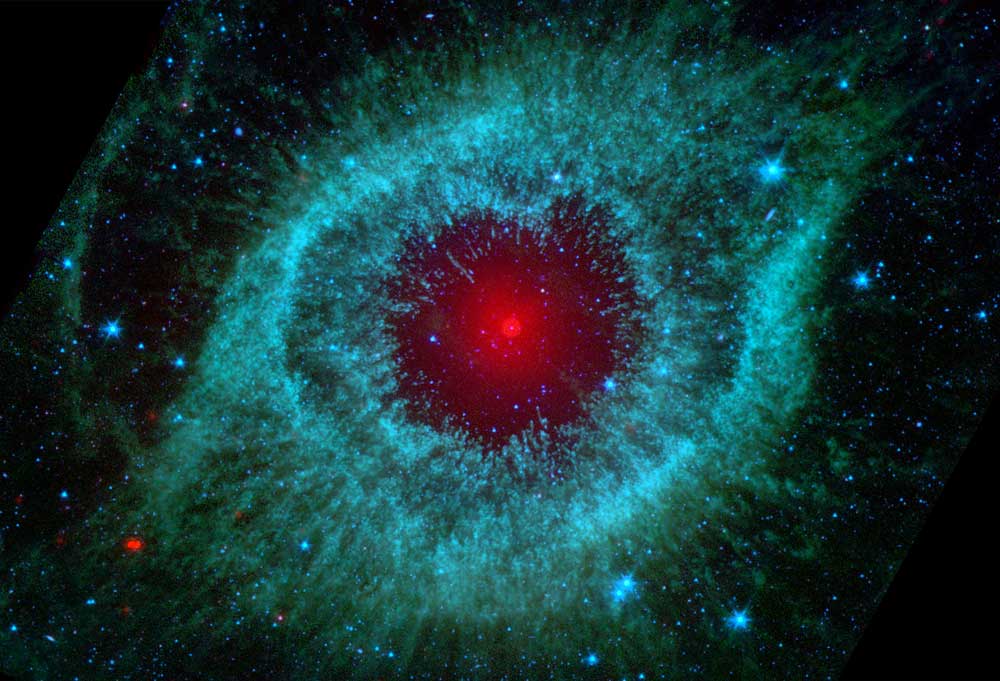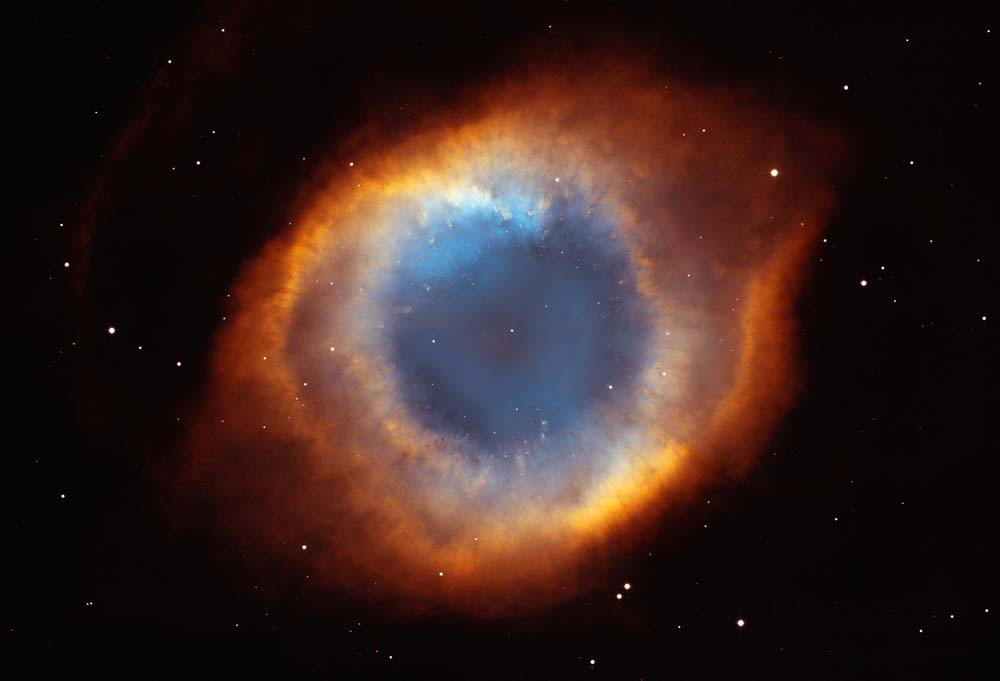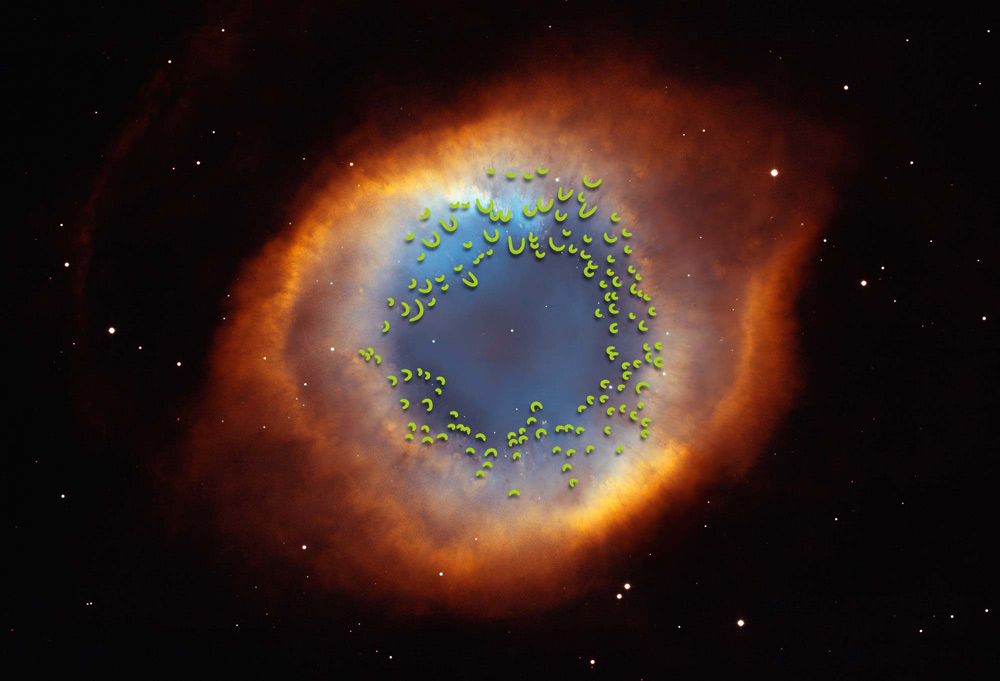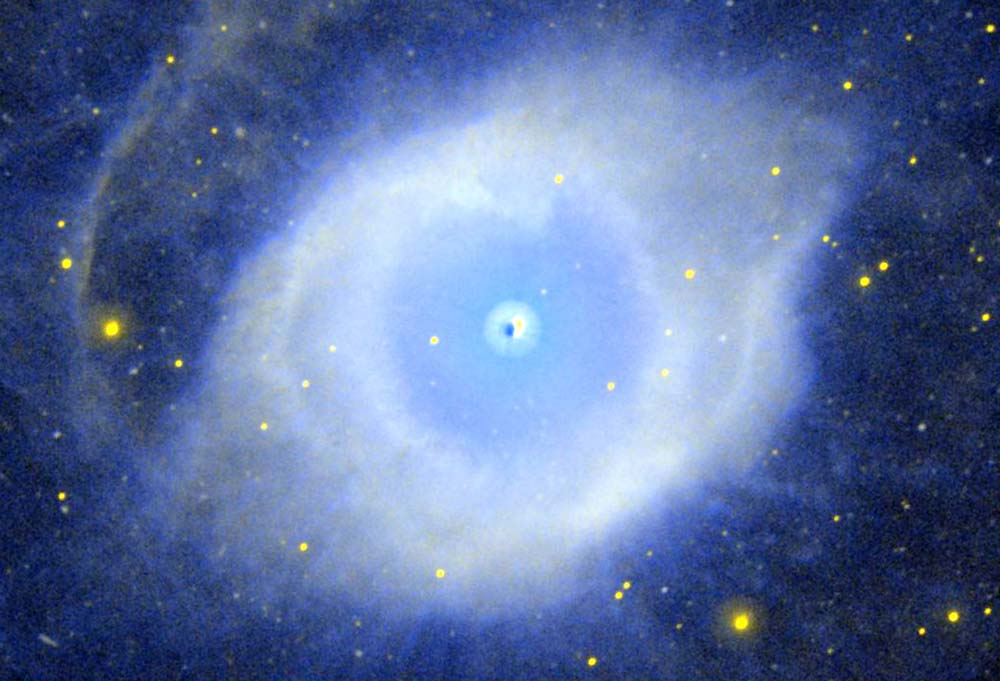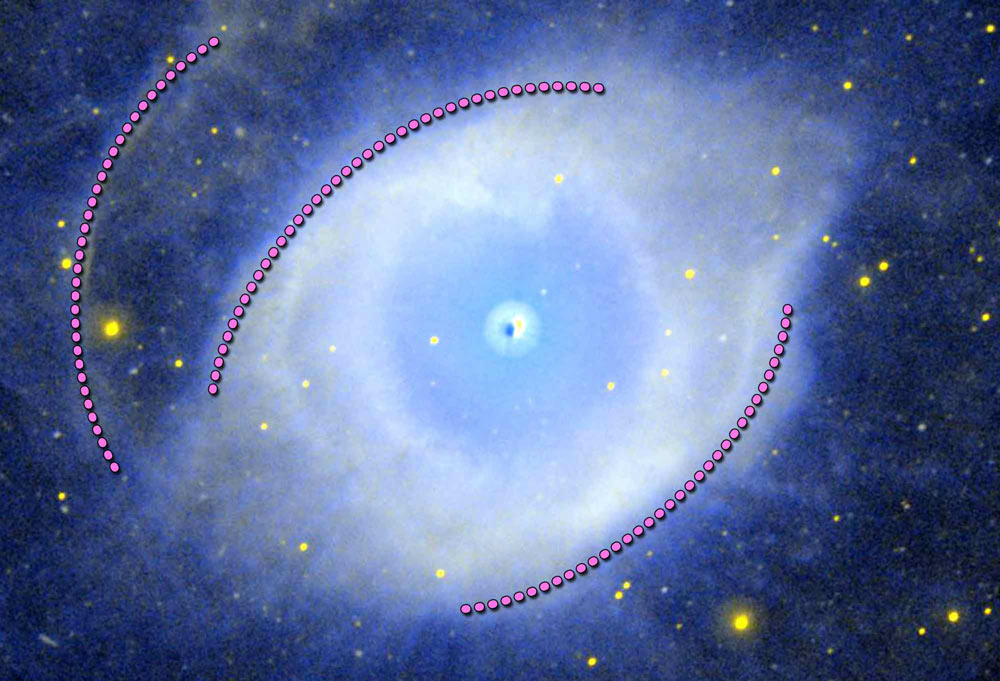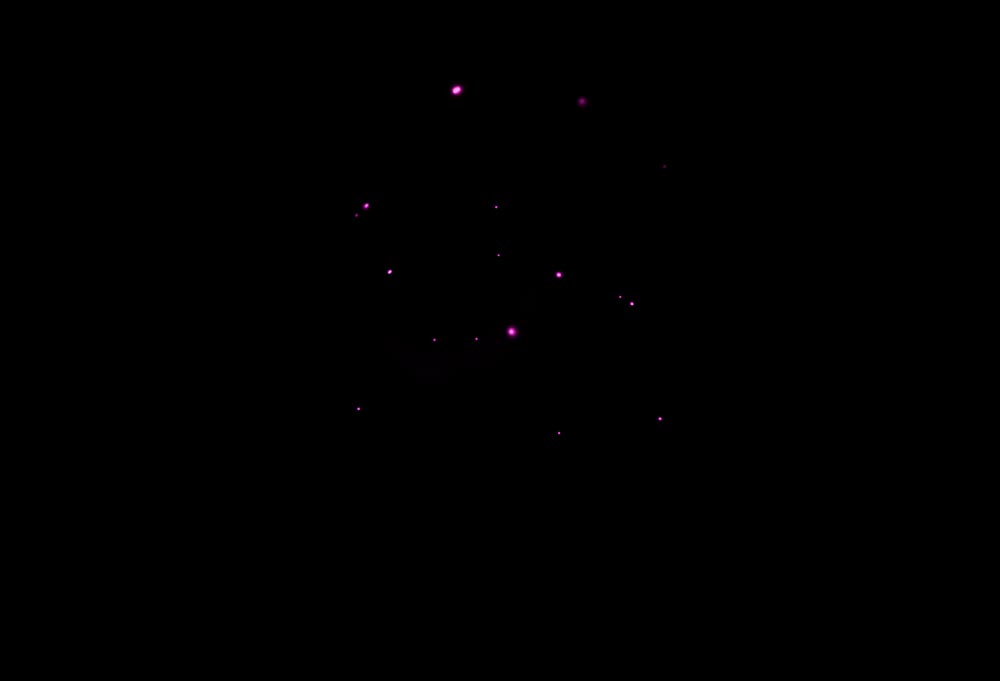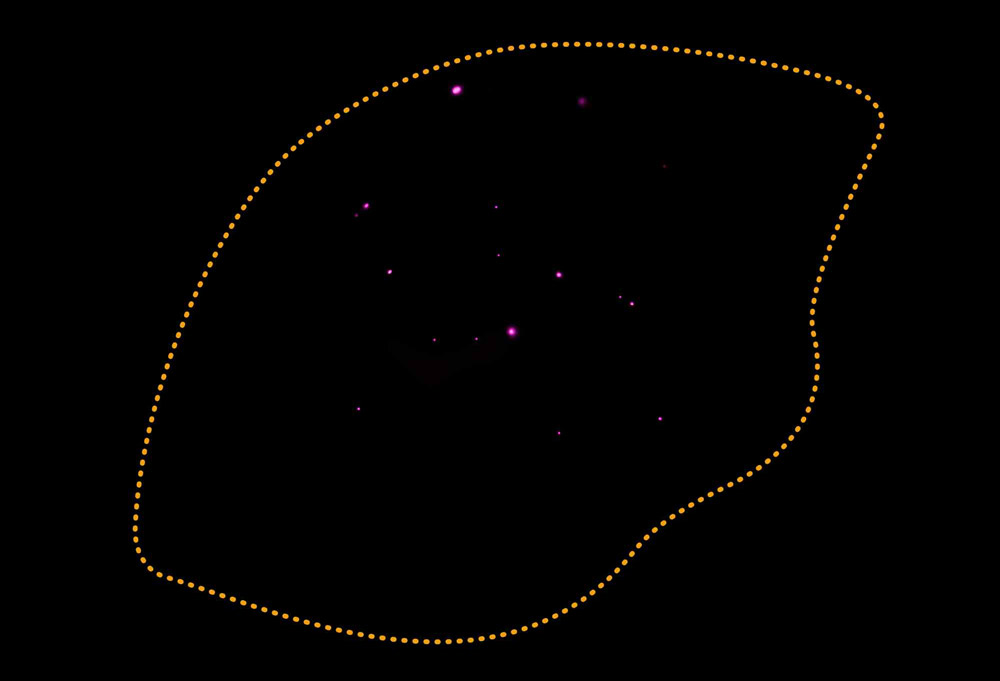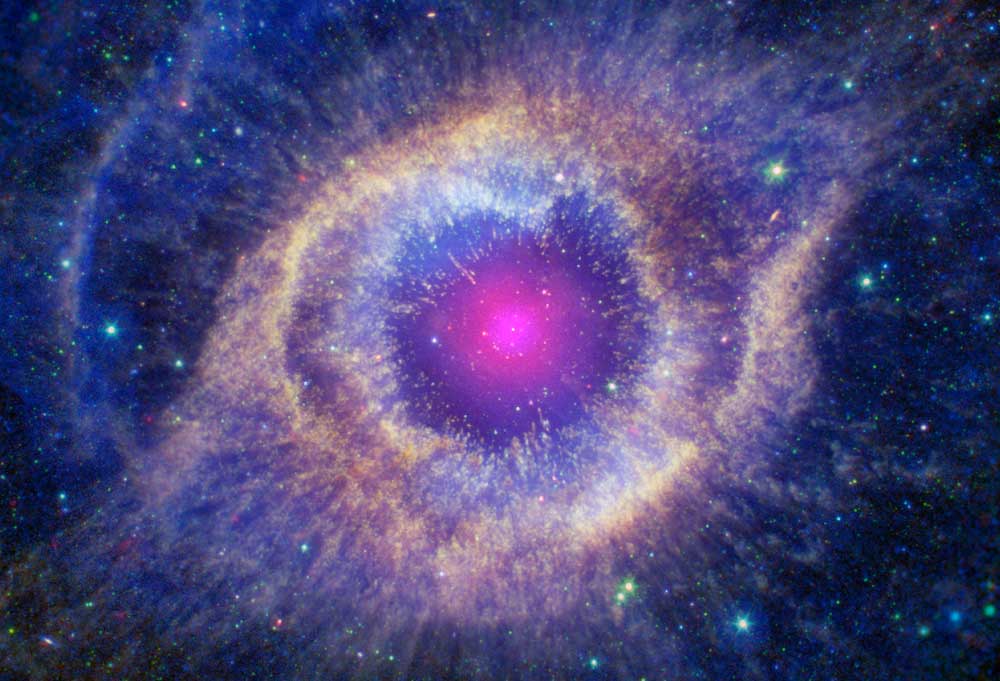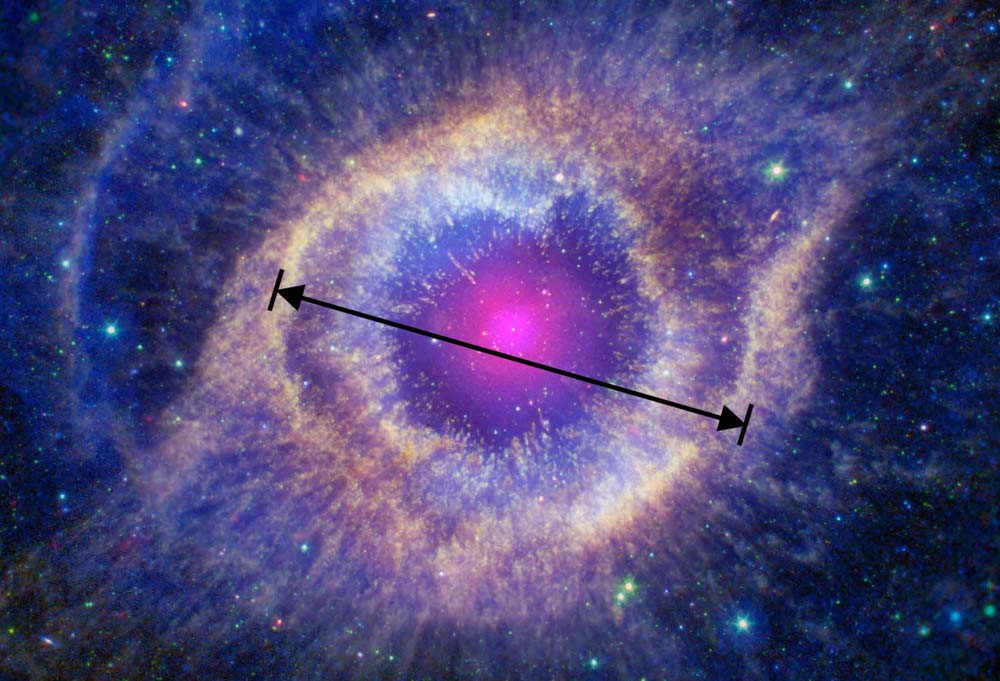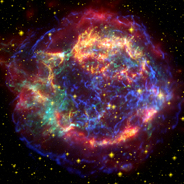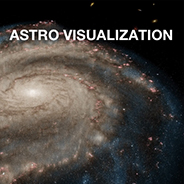Interactive Overview
Slider Interactive: A series of images showing the Helix Nebula in different wavelengths of light. Below the caption is a horizontal slider bar with five labeled stops and a solid white circle. Dragging the white circle right and left along the slider bar causes the image, labels, and caption to change. The change occurs gradually as one image, along with its associated captions and labels, fades out and the next fades in. A toggle button to the upper right of the image turns the image labels off and on. Labels are in the form of text with arrows pointing to specific features in the image. Other labels are graphic overlays.
Slider Stops
From left to right, the slider stops are labeled: Infrared, Visible, Ultraviolet, X-ray, and Multi-wavelength.
Summary of Slider Stops
Sliding left to right reveals the following:
- “Infrared” stop shows the environment surrounding a dying white dwarf star, including small and compact blue-green streaks in the gas and dust being expelled. This is the initial image shown when the interactive is loaded.
- “Visible” stop shows the same object, now revealing the fluffy brown and orange dust filaments that form an exterior ring around the star’s immediate environment.
- “Ultraviolet” stop shows the hot, blue-white glowing gas surrounding the star.
- “X-ray” stop shows small purple dots of background objects and the central star against a black background.
- “Multi-wavelength” stop shows a composite of all the interactive’s wavelengths combined.
Stop 1: Infrared
Image Description: Infrared
Against a black background is a small, glowing red dot in the center of the image. The red dot lies in a larger, duller red circle. Blue-green streaks heavily extend from the red circle, forming an uneven ring around the central area. The blue-green ring is thickest toward the upper right and lower left, resembling the shape of an eye. The ring grows in opacity moving away from the center before gradually becoming dimmer in brightness and forming a spiky exterior edge. Many small blue points, which are stars, some with diffraction spikes, and less frequent red points are scattered across the black swath of space.
Labels: Infrared
There are two text labels. The red circular area surrounding the core is labeled “Warm dust around star remnant.” The blue-green area is labeled “Gas and dust thrown into space.”
Caption: Infrared
The dying star in this planetary nebula expelled its outer layers as gaseous wind, which are set aglow by its intense radiation.
Stop 2: Visible
Image Description: Visible
This image reveals the same view of the Helix Nebula, now seen in visible light. A translucent, dull blue circle with small white points is in the center. Fuzzy, light orange-brown gas forms an uneven ring around the blue circle. Where the orange-brown gas meets the blue circle’s exterior, thin filaments extend toward the center. The light orange-brown gas is thickest toward the upper right and lower left, resembling the shape of an eye. The ring grows in opacity moving away from the center, forming a thick exterior edge. Small white points of light, which are stars, are scattered across the image. One tiny white point lies at the very center of the nebula.
Labels: Visible
There are two text labels and one graphic overlay. A small white point in the center of the object is labeled “White dwarf.” Many green U-shaped lines are thickly scattered across the area where the blue circle and light orange-brown gas meet. These lines are labeled “Dusty filaments,” highlighting their location and how they point toward the central white dwarf.
Caption: Visible
Thousands of thin filaments likely formed when hot stellar winds and radiation plowed into colder shells of gas and dust.
Stop 3: Ultraviolet
Image Description: Ultraviolet
This image reveals the same view of the Helix Nebula, now seen in ultraviolet light. A small, central blue-white point with a white halo lies in a blue circular area in the same position as the white dwarf on the “Visible” stop. A light blue-white wisp, resembling a cloud, extends from the blue center and forms an uneven ring. The ring is thickest toward the upper right and lower left, resembling the same shape of an eye as seen in the “Infrared” and “Visible” stops. The ring grows in opacity in some areas moving away from the center, such as toward the upper left and lower right. A blue-white wisp of material arcs toward the upper left. Small glowing yellow points of light are scattered across the image. Though the nebula lies against a dark background, the majority of the image is blue, including its surrounding environment which has a grainy blue glow.
Labels: Ultraviolet
There are three text labels and three graphic overlays. Three purple, curved dotted lines trace the shapes of gas shells: one toward the upper left, one toward the upper center left along the top of the eye, and the other toward the lower center right along the bottom of the eye. The purple line toward the upper left is labeled “Glowing shells of gas.” The middle of the blue and white circular center is labeled “White dwarf.” The ring of wispy blue-white material is labeled “Hot, glowing gas.”
Caption: Ultraviolet
The central white dwarf and the surrounding shells of gas shine brightest in ultraviolet because they are so hot.
Stop 4: X-ray
Image Description: X-ray
This image reveals the same view of the Helix Nebula, now seen in X-ray light. Against a black background, small bright purple dots are thinly scattered in the top center of the image, including one at the very center of the now invisible nebula.
Labels: X-ray
There are two text labels and one graphic overlay. An orange dotted line traces the general outline of the Helix Nebula, which is invisible in X-ray light. A bright purple point of light in the center, slightly larger than the surrounding purple dots, is labeled “Intense X-rays from the central white dwarf.” Toward the top center, a slightly larger bright purple speck is labeled “Active core of a distant galaxy.”
Caption: X-ray
X-ray light highlights only the star at the center of the Helix Nebula as well as emissions from the cores of distant galaxies.
Stop 5: Multi-wavelength
Image Description: Multi-wavelength
This image is a composite of the wavelengths explored in this slider. In the center is a glowing purple and red core. A thin black ring surrounds the core, revealing a portion of space that the nebula lies against. Condensed, hazy thin streaks of various colors extend from the transparent black area to form a ring: blue, yellow, and brown. The dusty plume ring is thickest toward the upper right and lower left, resembling the shape of an eye. The ring grows in opacity in some areas moving away from the center, such as toward the upper left and lower right. A blue-white wisp of material arcs toward the upper left. Small glowing yellow and blue points of light, which are stars—some with diffraction spikes—are scattered across the image. Though the nebula lies against a dark background, the majority of the image is blue, including its surrounding environment which has a grainy blue glow.
Labels: Multi-wavelength
There is one text label and one graphic overlay. A black line with arrows on both sides goes across the center of the nebula, tracing its diameter. The black line is about half the width of the full image and is labeled “2.5 light-years.”
Caption: Multi-wavelength
The Helix Nebula has small and large features as well as cooler and hotter components—and its dust seeds the space around it.
